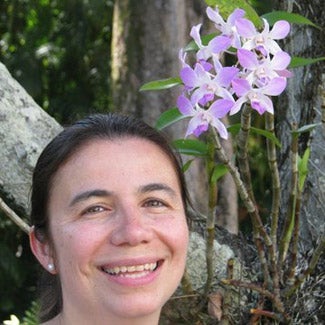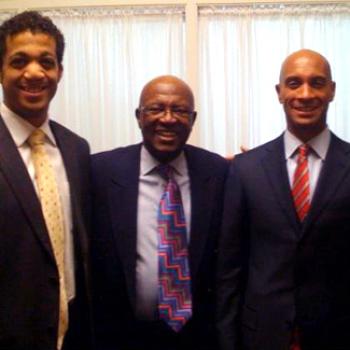On writing Nicaraguan women’s history
Victoria González-Rivera ’90
“I became a feminist and started to focus on an overarching question that would absorb much of my time over the next two decades: why assume that only white women fought back against sexism before the 1970s?”

In 2002, I became the first Nicaraguan woman to earn a PhD in Latin American history at a U.S. institution.1 Research I conducted between 1994 and 2009 became the basis for my book Before the Revolution: Women’s Rights and Right-Wing Politics in Nicaragua, 1821-1979 (Penn State University Press, 2011), a pioneering work that seeks to replace earlier interpretations of the history of feminism and women’s roles in right wing politics in Nicaragua. Before the Revolution documents the rise of first-wave feminism in Nicaragua during the first decades of the 20th century and the movement’s co-optation by a U.S.-backed dictator. I address the reasons why so many working and middle-class women in this small and poor country felt compelled to support a right-wing dictatorship over the course of almost half a century. I tell how, believing itself to be the rebel child of the leftist Sandinista patriarchs, second-wave feminism developed in Nicaragua in the early 1990s completely unaware of its foremothers’ existence. And how, in 1996, with the heirs of the liberal right-wing dictatorship back in power, a new liberal women’s movement emerged, with no memory of women ever organizing on behalf of the Somozas. I could not have made this story up even if I had tried. Not surprisingly, my years at Oberlin profoundly influenced the questions I ask in this book, as well as their answers. My years at Oberlin also influenced my decision to pursue the doctoral degree in history.
When I arrived at Oberlin at the age of 17 in August 1986, the United States was deeply involved in supporting the Contra war against the leftist Sandinista Revolution in Nicaragua. I had lived in Nicaragua from 1970 through December 1983, and knew first-hand the horrible effects of that war. While at Oberlin, I majored in history, Latin American studies, and women’s studies, a course of study that allowed me to gain a more detailed understanding of U.S. intervention in Latin America and its ramifications. I also became a student activist, engaged not only in the solidarity movement with Central American revolutions, but also in the South African divestment movement.
I was unhappy, however, with the simplistic ways in which many academics and solidarity activists understood everyday life in Nicaragua, especially gender relations there. Influenced by developments in Nicaragua and courses I took at Oberlin with Chandra Mohanty, Kum-Kum Bhavnani, Margaret Randall, Cherrie Moraga, Ana Castillo, Angela Davis, Gloria Watkins (a.k.a. bell hooks), and Steve Volk, I became a feminist and started to focus on an overarching question that would absorb much of my time over the next two decades: why assume that only white women fought back against sexism before the 1970s?
It turned out that many other people had been asking the same question, as evidenced by the many books that were published in the late 1980s and 1990s on the history of first wave feminism in Latin America. But there was still the assumption that the smaller, poorer countries like Nicaragua tended to be more backwards and therefore more accepting of sexism, than the larger, more industrialized ones. My gut feeling told me this was not so, and I found plenty of evidence in the archives to argue that Nicaraguan first-wave feminism flourished during the early part of the 20th century. The archives, in fact, confirmed my contention that Nicaraguan women’s lives had always been nuanced and complex, a reality my book seeks to convey.
Incredibly, my findings on the history of first wave feminism and the important role right-wing women played in supporting the Somoza dictatorship turned out to be quite controversial and initially provoked a negative and/or incredulous response among audiences in both the United States and Nicaragua. Some Nicaraguans were upset because with me because I was arguing that feminism was not a foreign import. Others were upset because I was taking credit away from the Sandinistas for “awakening” women to their inner power. Still others were outraged that I was making the Somoza dictatorship palatable by ignoring the “fact” that working-class Somocista women had either been duped or coerced into Somocismo. Some were both confused and saddened: they conceded that many women had supported the Somozas, but could not understand why that was important. Wasn’t their story as Sandinista revolutionaries more meaningful? What kind of scholar would chose to write about evil people? My father, in fact, a devout anti-Somocista activist, died without ever fully understanding why, among all the topics I could have picked to study, I picked this one.
Ironically perhaps, my conclusions about Nicaraguan history benefited immensely from the dialogue and debate that my research provoked during the late 1990s. I am very grateful for the opportunity to have heard such diverse opinions on the writing of Nicaraguan women’s history and have tried to address specific concerns in my writing. This experience I hope made me a better historian and a better person.
Oberlin taught me to not be shy about asking difficult questions or taking controversial and unpopular stands on issues that were important to me. This lesson was not an abstract one. In fact, I put it into practice over and over again as a student activist at Oberlin and later on as a scholar in academia.
1. This information is to the best of my knowledge. (There are a few Nicaraguan women with pre-2002 PhDs in Latin American history, but from institutions outside the United States. Keep in mind Nicaragua does not offer PhDs in Latin American history.)
Tags:
You may also like

On making new friends on a service trip
“Everyone was open to each experience we encountered, greeting each inevitable trial with a smile, a shrug, and a “we’ll figure it out.””
Charlotte Landes ’13

On volunteering at Oberlin
“Through a bevy of volunteer opportunities, the Murray Ridge - Oberlin College Alliance has re-established a vital outlet for Oberlin students to connect with some very special members of our...
Paulena Papagiannis ’12

On the lifelong connection to Oberlin’s values
“Oberlin instills in each student a dedication to improving the lives of others... I continue to incorporate my four years of experiences into my everyday life while working in the U.S. House of...
Christopher Sanders ’08